|
Thyme – The Common Garden Herb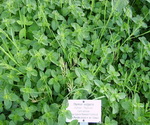
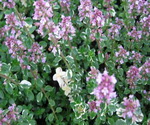
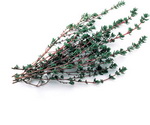
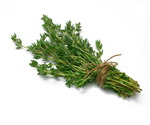
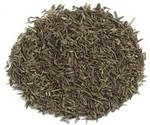
Thyme is a member of the Lamiaceae family also known as the mint family. The common garden herb of botanical name Thymus vulgaris and the lemon variety of the herb Thymus citriodorus are the only two of the over 100 varieties of the herb, that are of culinary usage.
The herb is a small perennial shrub that is stiff and bushy in appearance with pairs of narrow elliptical gray-green leaves that are reddish underneath and pinkish white lipped flowers.
The aroma is pungent, warm and spicy; the flavor is somewhat clove-like.
Origin The herb is native to the Mediterranean with many species from Southern Europe, Western Asia and North Africa.
History The herb was known to the ancient Greeks who believed it to enhance vigor among the aged by stimulating their mental powers. The herb was also used medicinally in teas to soothe coughs. The Romans used the herb to complement cheeses and to flavor alcoholic beverages. The herb was introduced into England by the Romans and was common during the Middle Ages. The herb is in common use today throughout the Caribbean, Europe, the Middle East and the United States. The main producers of the herb are the French and the Spanish, who are also the main consumers of the herb. Buying/Storage Thyme can be purchased in bunches as the fresh herb and can be stored in the refrigerator to keep it fresh for about two few weeks. The herb's main flavor compound thymol is sold as an essential oil.
The dried herb will last longer than most dry herbs from 18 months to 24 months if stored properly in an airtight pack and away from extremes of heat, light and humidity. Use The herb works well with Middle Eastern cuisine as well as Western cuisine. The herb is also used with chicken, clams, fish, lamb, mussels, pork, salmon, turkey, eggs, potatoes, tomatoes, zucchini, and cream sauces.
For some great sections on herbs and spices some great references are: • The Spice and Herb Bible – Second Edition by Ian Hemphill with recipes by Kate Hemphill • The Food Encyclopedia by Jacques L. Rolland and Carol Sherman with other contributors • Field Guide to Herbs & Spices by Aliza Green • The Contemporary Encyclopedia of Herbs & Spices – Seasonings For The Global Kitchen by Tony Hill
Cooking Basics
|
Thyme Botanical Cycle
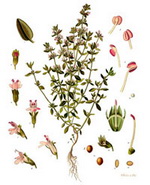
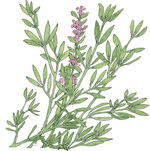
Mint Family
Basil
Marjoram
Mint
Oregano
Rosemary
Sage
Savory
Thyme





